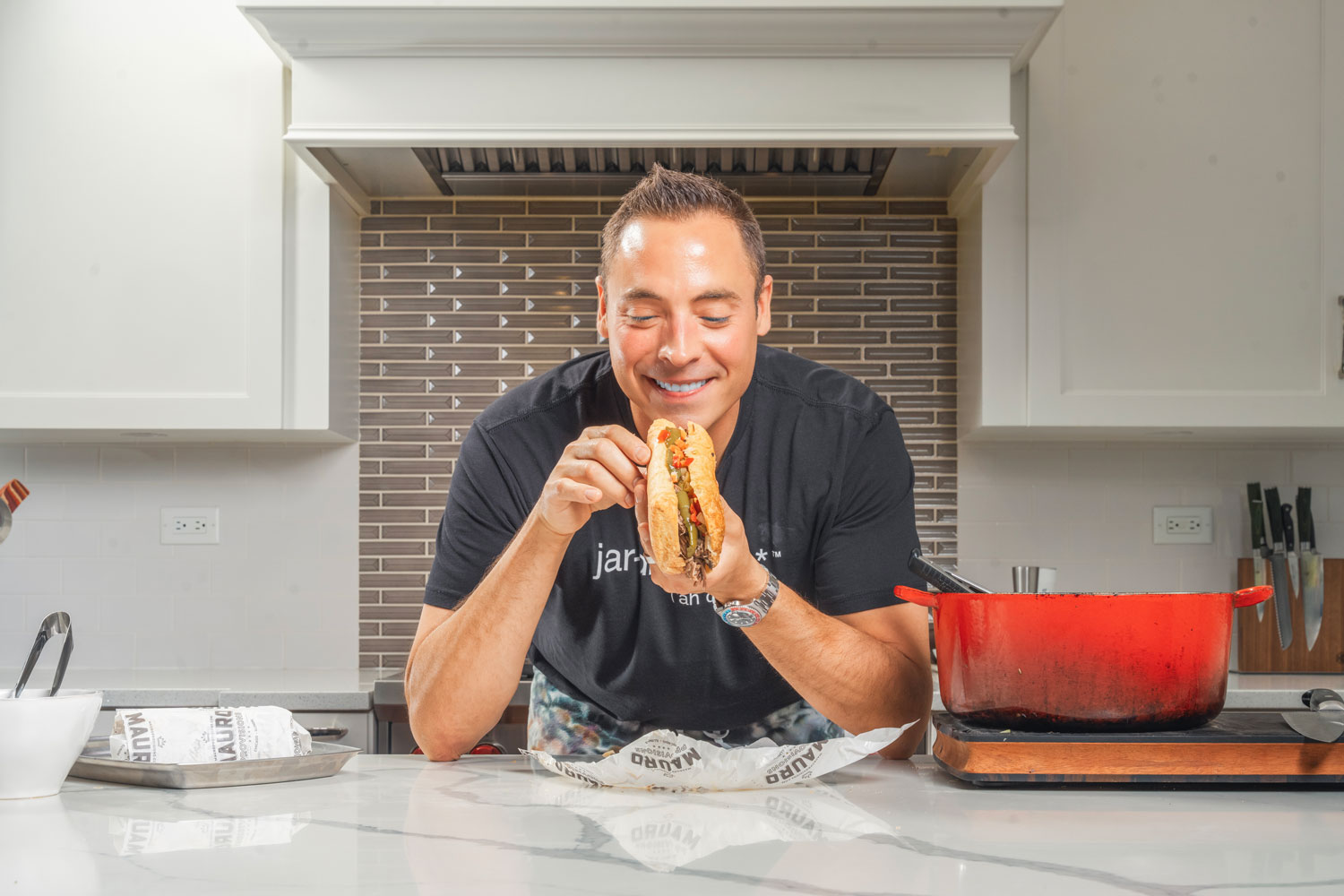Jeff Mauro grew up on Italian beef. The founder of the Chicago-centric specialty brand Mauro Provisions and host of Food Network shows like Sandwich King. Mauro aims to honor the essence of the real thing with his make-at-home version. To mimic the yielding texture of thinly sliced beef (“Even the Sandwich King doesn’t own a slicer; my wife would kill me,” he quips), he landed on a low-and-slow braise. Combined with a few other key hacks, like choosing bread with just the right consistency and teasing maximum flavor from pantry staples, it makes for a beef sandwich to please even lifelong aficionados.
Jeff Mauro’s Italian Beef
Makes 6 sandwiches
Active time 1 hour 15 minutes
Total time 5 hours 15 minutes
| 2 | Tbsp. olive oil, plus more as needed |
| 1 | 2-to3-lb. chuck roast |
| Kosher salt and freshly ground black pepper, for seasoning | |
| 1 | medium onion, roughly chopped |
| 1 | Tbsp. dried Italian seasoning |
| 2 | fresh thyme sprigs |
| 1 | dried bay leaf |
| 2 | tsp. crushed red pepper flakes |
| 6 | garlic cloves, peeled |
| ½ | cup dry red wine, like Chianti |
| 5 | cups low-sodium beef stock |
| 6 | hinged sub rolls, like Turano brand |
| Roasted sweet peppers and hot giardiniera (like Mauro Provisions brand), for serving |
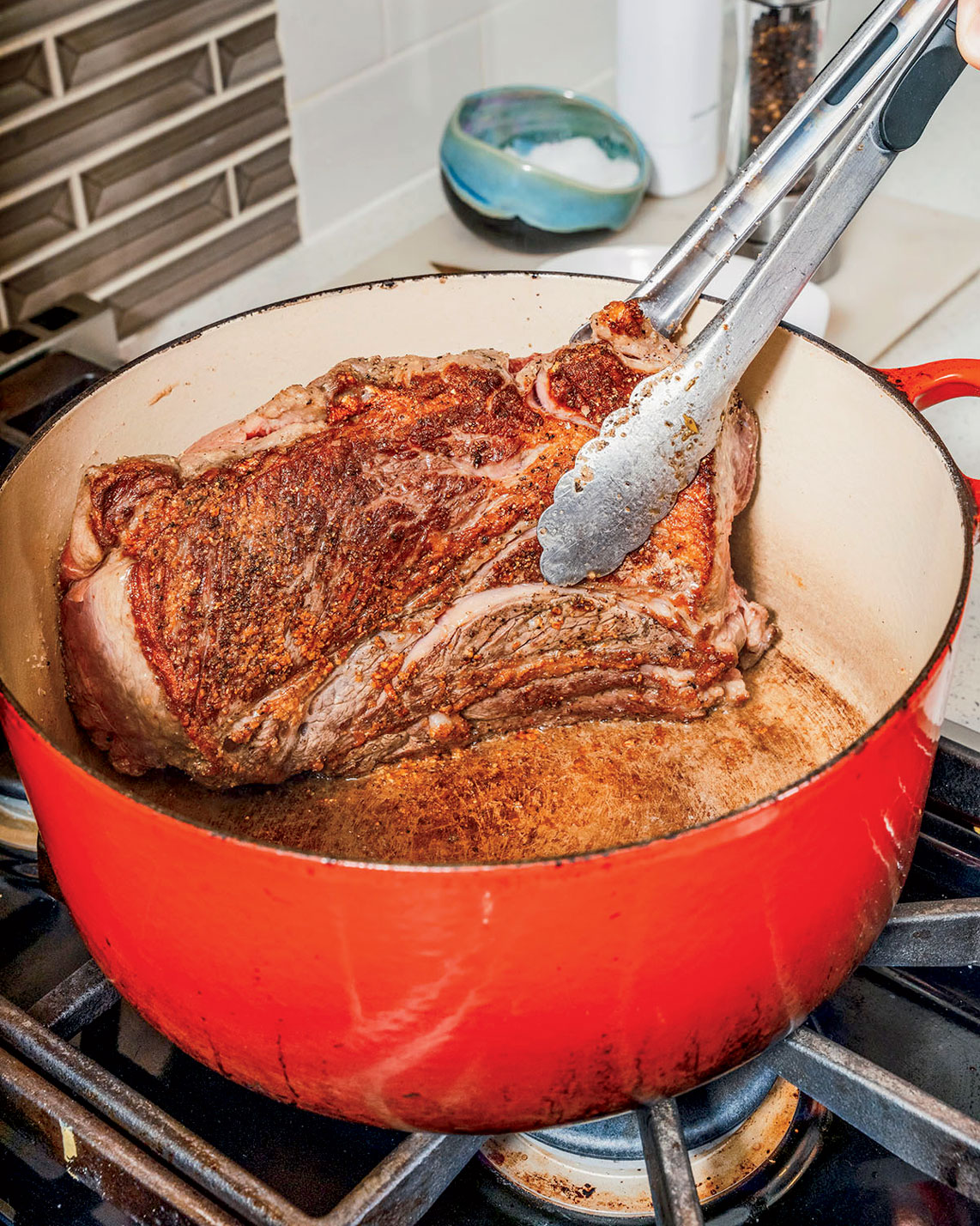
1. Sear the beef Heat the oven to 300 degrees. In a large Dutch oven, heat 2 tablespoons oil over high. Liberally season the roast with salt and pepper and place it in the pot, immediately reducing the heat to medium-high. Leave roast undisturbed until it develops a deep brown crust, about 5 minutes. Turn and repeat until the roast has been seared on all sides.
Jeff’s tip: “The crust provides the color and flavor. The more you move the roast, the more you hinder that. So show some patience: Press it down once and let it be.”
2. Sauté the aromatics Transfer roast to a plate. Add onions and a pinch of salt to the Dutch oven and sauté gently over medium heat, stirring occasionally and adding more oil if the onions become dry. Cook until golden brown, about 10 minutes. Stir in herbs and red pepper flakes, sauté for 1 minute, then add garlic and cook until fragrant, about 30 seconds.
Jeff’s tip: “Getting that deep golden brown color on the onions and blooming the herbs in the oil brings so much flavor.”
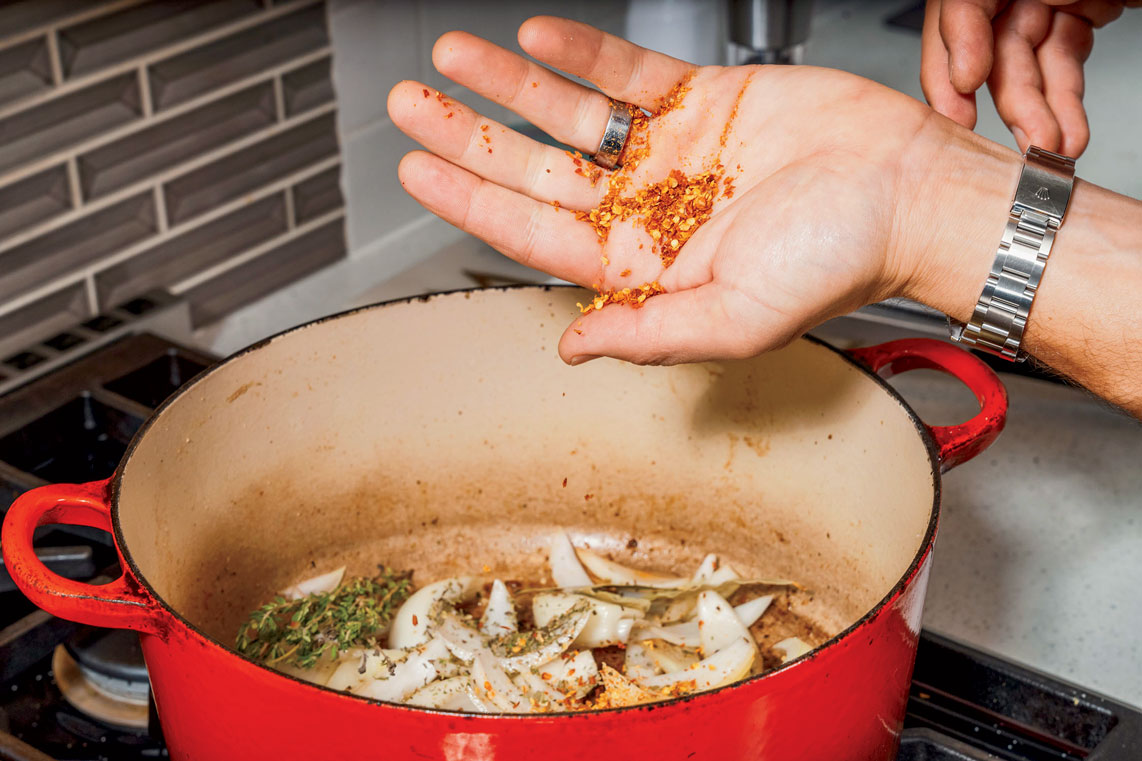
3. Deglaze the pot Add wine and stir briefly with a wooden spoon, scraping up any bits that are stuck to the bottom of the pot.
Jeff’s tip: “None of the guys in the beef stands are using wine, but this is one more step to make it great. It provides the acidity to stand up to the fat in the braise liquid.”
4. Braise the beef Return roast and its juices to the pot. Add enough stock to nearly submerge the roast. Heat until stock begins to simmer, then cover pot and place in the oven. Braise until very tender, 3 to 4 hours. Remove from the oven and transfer the roast to a cutting board to cool. Taste the jus, adding salt if needed, and set the pot aside.
Jeff’s tip: “Bringing the stock to a simmer in the oven takes forever. So it’s worth the couple minutes to bring it to a boil on the stove first. That cuts your braise time 20 to 30 minutes.”
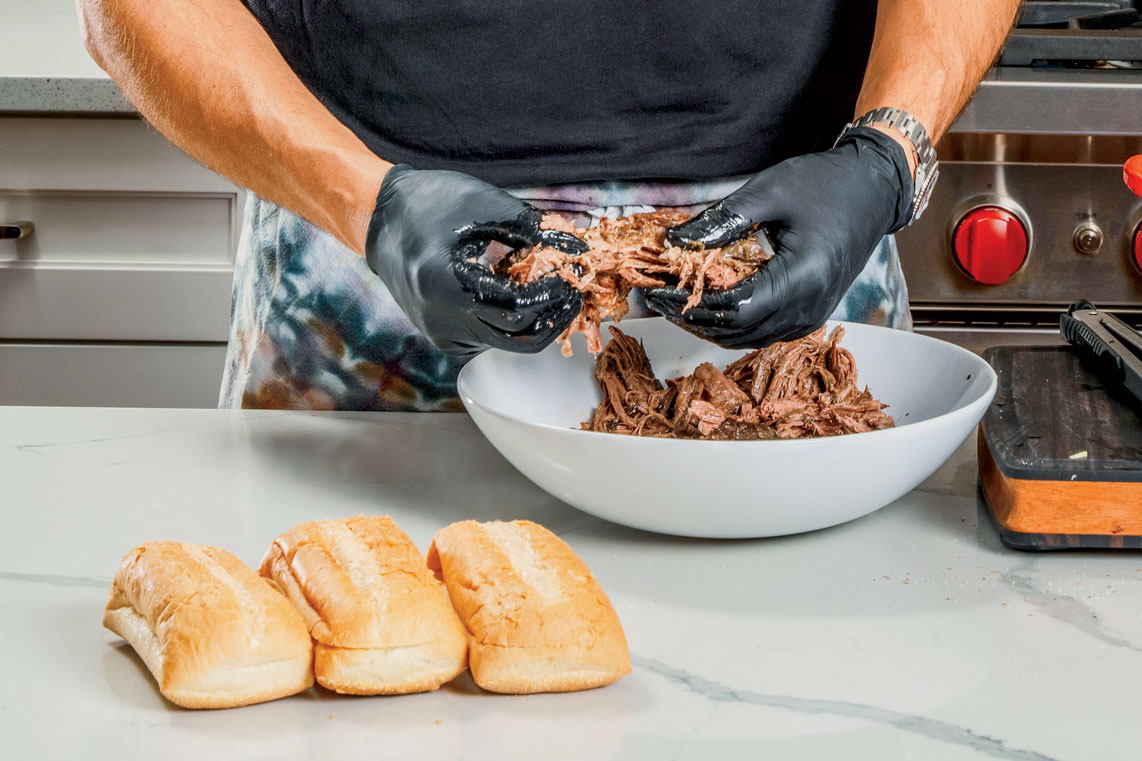
5. Shred the beef When roast is cool enough to handle, shred it, discarding any gristle. Remove onion, thyme, and bay leaf from the jus and return it to a simmer on the stove. Add shredded beef to the jus to rewarm.
Jeff’s tip: “You can use tongs for shredding, but you want every ounce to be melt-in-your-mouth, so I do it by hand to feel things like connective gristle you might not want on your sandwich.”
6. Prepare the rolls Heat the oven to 350 degrees. Lightly brush the exterior of rolls with giardiniera oil, place them on a baking tray, and warm in the oven just until lightly crisp, 2 to 3 minutes.
Jeff’s tip: “You can’t use any roll for this. It’s gotta be a Chicago bakery sub roll, like Turano, Gonnella, or S. Rosen’s. They have the right structure and protein content to stand up to all that gravy.”
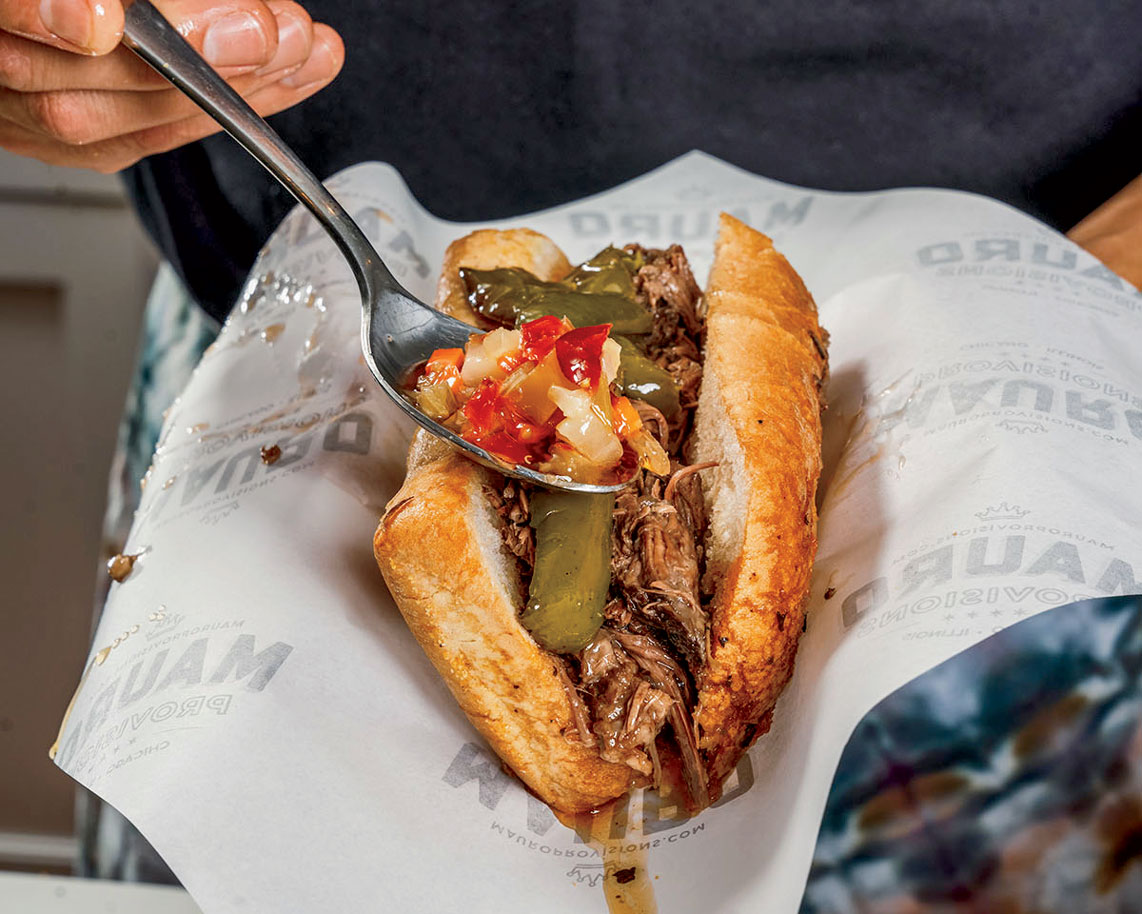
7. Build the sandwiches Open a roll, taking care not to break the hinge. Add some beef, quickly dip the bottom of the roll into the jus, and immediately set the sandwich on a square of deli paper, parchment, or foil. Top as desired with peppers and giardiniera, then wrap the sandwich snugly. Repeat with remaining rolls. Allow the sandwiches to rest for several minutes, then unwrap and eat.
Jeff’s tip: “Wrapping marries the textures and flavors of the bread, meat, peppers, and oil. It also compacts the sandwich so it’s easier to eat.”



